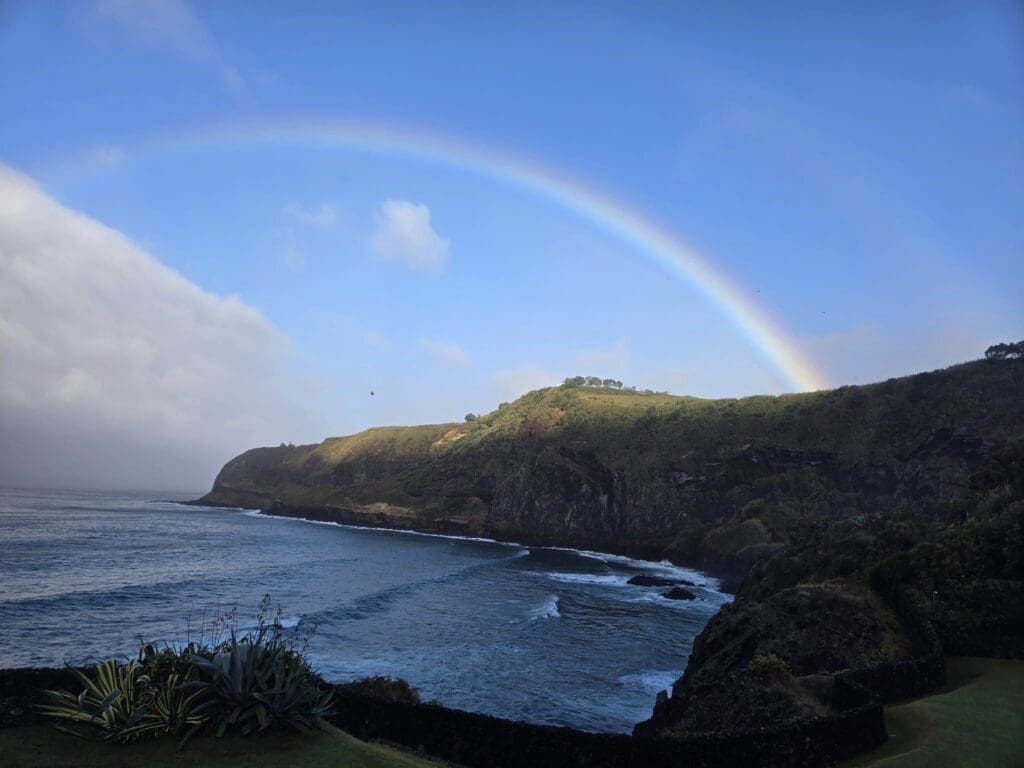
The Azores have always intrigued me – nine volcanic islands floating in the Atlantic over 800 miles from Portugal, little known and largely under the tourist radar. But nothing prepared me for the raw beauty of Sao Miguel, where every turn in the road revealed another wonder. This green jewel, crowned with crater lakes and wrapped in volcanic coastlines, delivers a variety of experiences that seem almost impossible to exist in one place.
Ponta Delgada: Capital of the Azores
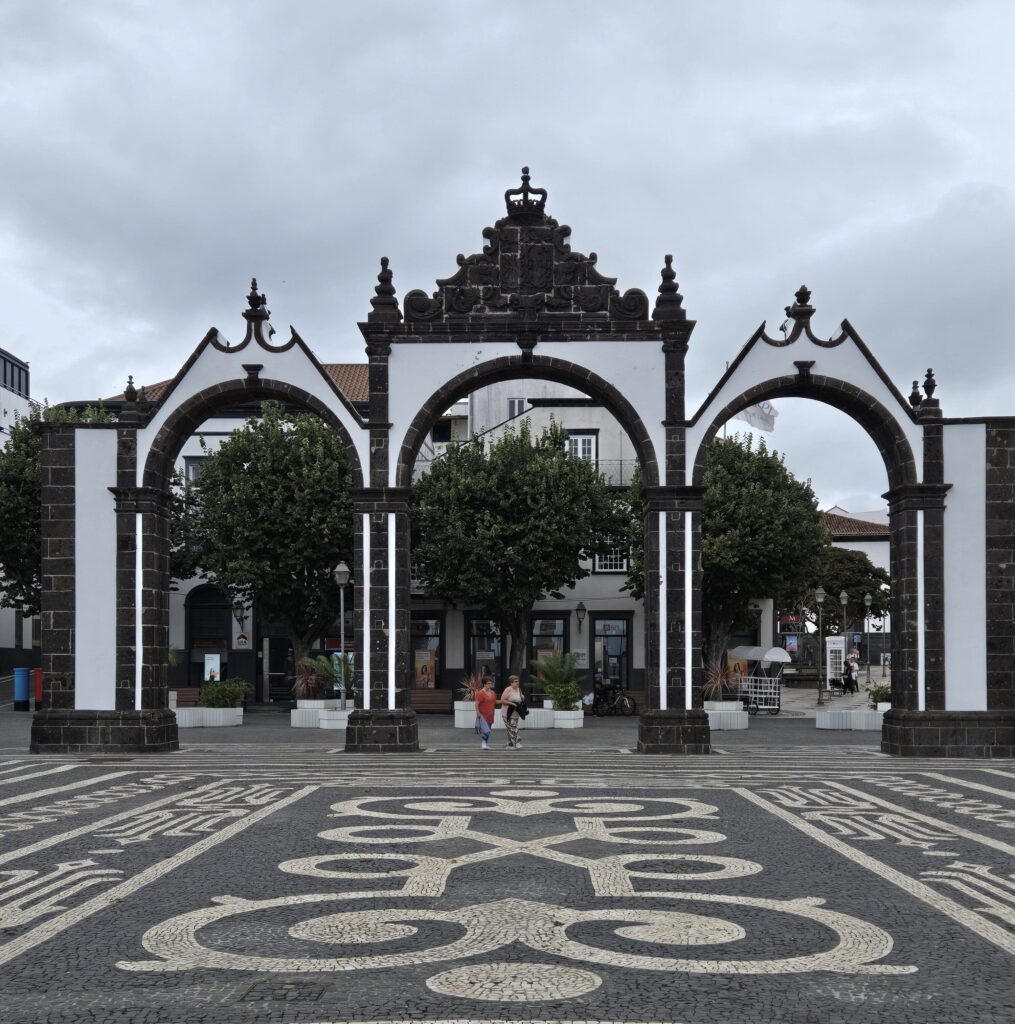
Sao Miguel is the largest and main island of the Azores. It’s easy to access via a two-hour flight from Lisbon or about a five-hour direct flight from Boston or New York. Ponta Delgada is the capital city of the Azores where you will find plenty of shopping, restaurants, a striking city gate, a bustling port, colonial architecture, and cobbled streets. Accommodations across the island range from boutique eco-hotels to upscale resorts. Sao Miguel is only 40 miles long and nine miles wide, so you can easily traverse it in a day. Travel Maestro tip: The José do Canto Botanical Garden in the city, showcases thousands of species from around the globe; many trees are monumental in size.
The Coast: Where Fire Meets Sea
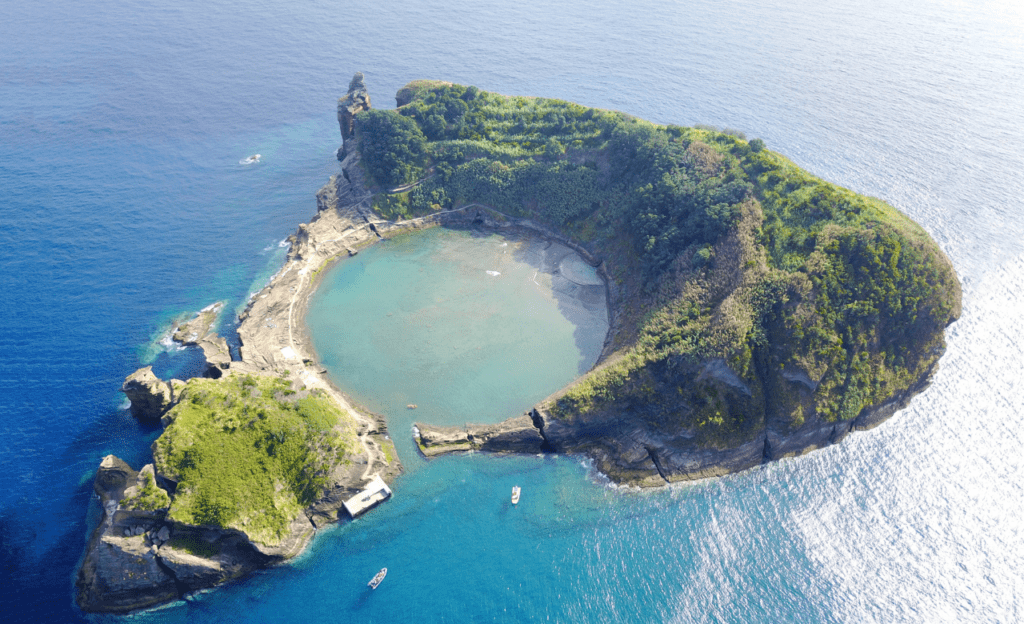
My journey began along Sao Miguel’s dramatic shoreline, where black sand beaches stretch beneath towering cliffs, their darkness creating an otherworldly contrast with waters so blue they rival the Caribbean. But unlike the Caribbean, here the ocean holds a wild energy, crashing against volcanic deltas and filling natural pools with crystal-clear water. On Vila Franca, I discovered what might be the world’s most perfect swimming spot: a crater-turned-lagoon in a crescent-shaped islet just offshore. Travel Maestro tip: I highly recommend getting a rental car, so you have the mobility to experience all the island offers. Just be aware that most roads are skinny, hilly, and curvy, but the views are unmatched. And know that it will be a manual shift car.
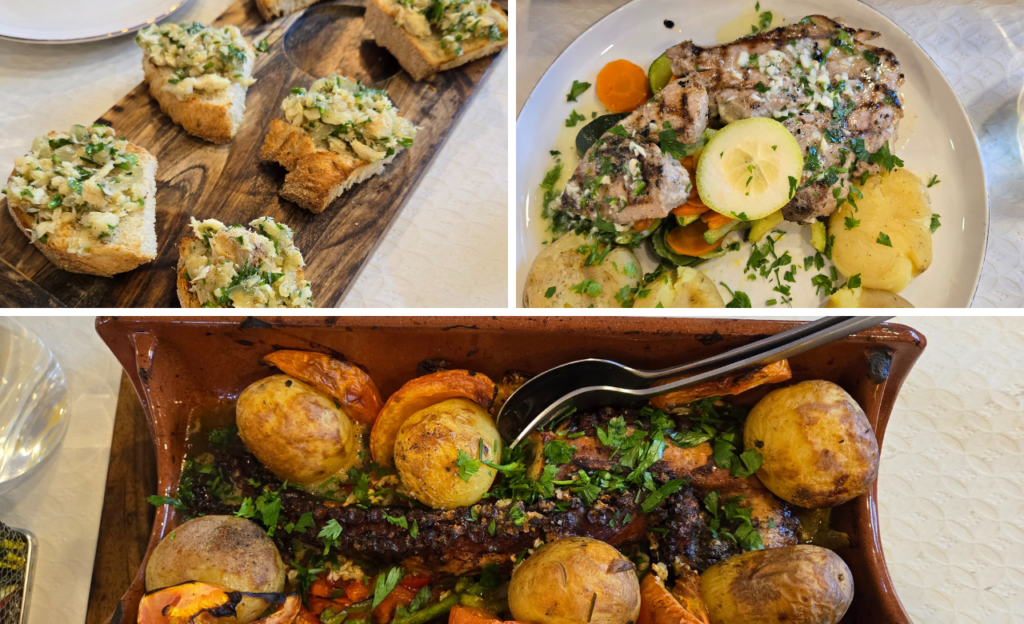
The waterfront restaurant Bar Caloura at the fishing Port of Agua de Pau is known as the best fish place on the island. Here, I experienced sea-to-table fresh codfish and local limpets, harvested from the volcanic rocks outside. Another memorable meal was at the lovely Black Whale Restaurant in Vila Franca. There I had octopus roasted on a traditional roof tile; its tender meat infused with a smoky essence that spoke of centuries of tradition. And speaking of traditional Azorean cuisine, the Portuguese queijo fresco (fresh cheese) and pepper sauce served for breakfast, lunch, and dinner was exquisite.
Into the Mystical Interior
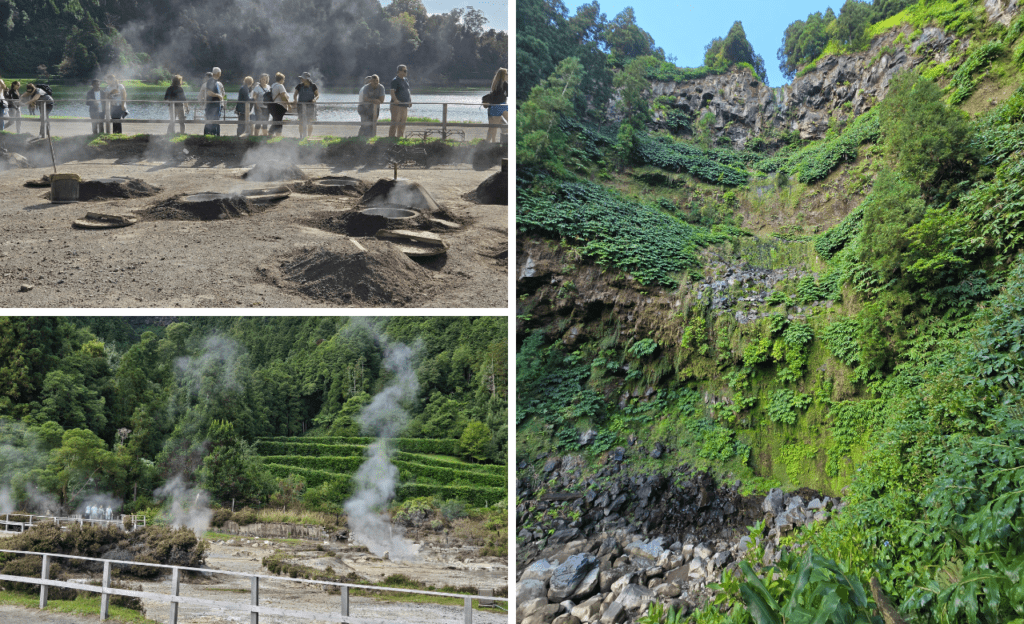
Venturing inland to Furnas felt like entering another world entirely. Here, the earth itself seems alive, with steam rising from fumaroles and the scent of sulfur hanging in the air. The village sits inside a volcanic crater, where thermal activity creates a landscape that seems more fitting for a science fiction novel than reality. A challenging hike to a soaring waterfall rewarded me with views that made every steep step worthwhile (even though there was only a trickle flowing in October). Travel Maestro tip: Taste Cozido das Furnas, a traditional Portuguese meat and vegetable stew cooked for eight hours in a large pot buried in a fumarole or cooking hole, in the volcano-heated ground.
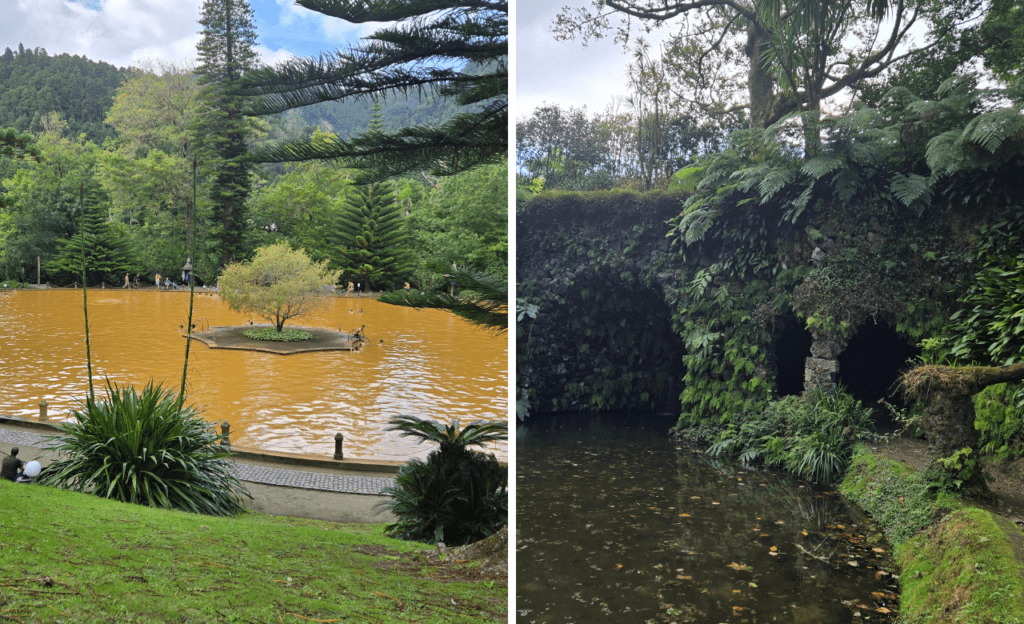
Terra Nostra Park became my afternoon sanctuary, its century-old botanical garden hosting specimens from around the world is superb. But the true magic lies in its famous thermal pool, where we soaked and walked around in the huge pool in five feet of warm water. Travel Maestro tip: Wear a dark-colored swimsuit because the iron-rich waters may stain it. The bottom half of my husband’s white goatee turned a rusty orange by mineral deposits as we soaked! Fortunately, the dye washed out in the fully equipped changing rooms which feature showers, hairdryers, and lockers. Afterward, walking through the garden among rare plants and ancient trees was the crowning touch of another relaxing day absorbing the beautiful nature of the island.
Sao Miguel’s Cultural Treasures
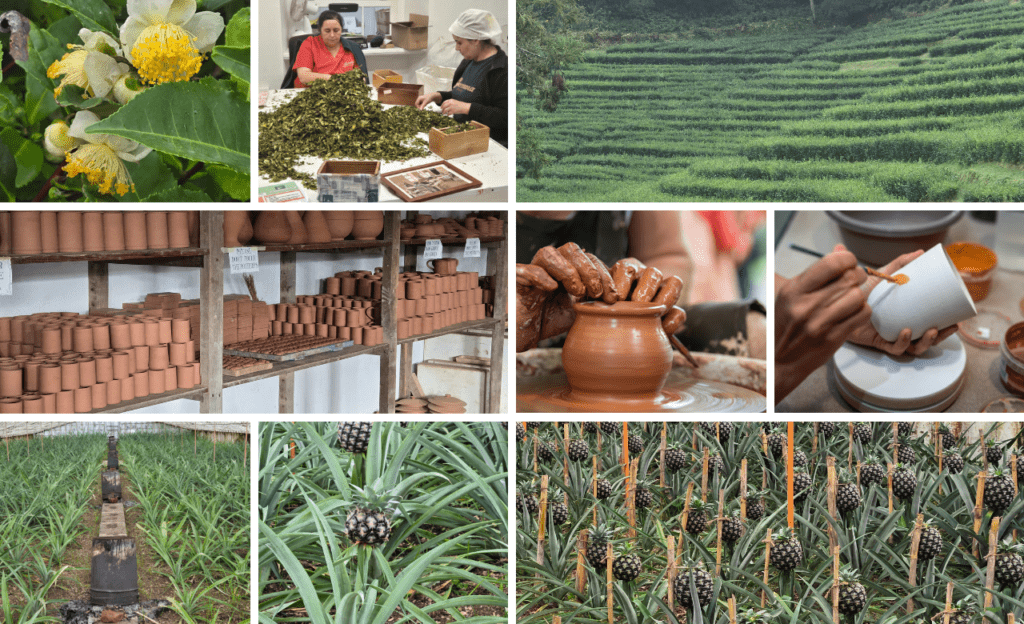
Sao Miguel’s cultural heritage proved just as rich as its natural wonders. At Gorreana, Europe’s oldest tea plantation, I walked between rows of tea plants and learned how my favorite beverage is produced. We also visited the 100-year-old Arruda pineapple plantation (one of 6,000 in the Azores!), for a free, self-guided tour of the glass greenhouses. I learned that the plants grow for two years before the sweet and tart fruit is harvested. At Cerâmica Vieira, I watched artisans work their potter’s wheels and hand-paint designs showcasing centuries of craftsmanship. And I got to taste local traditions at the “Mulher de Capote” liqueur factory.
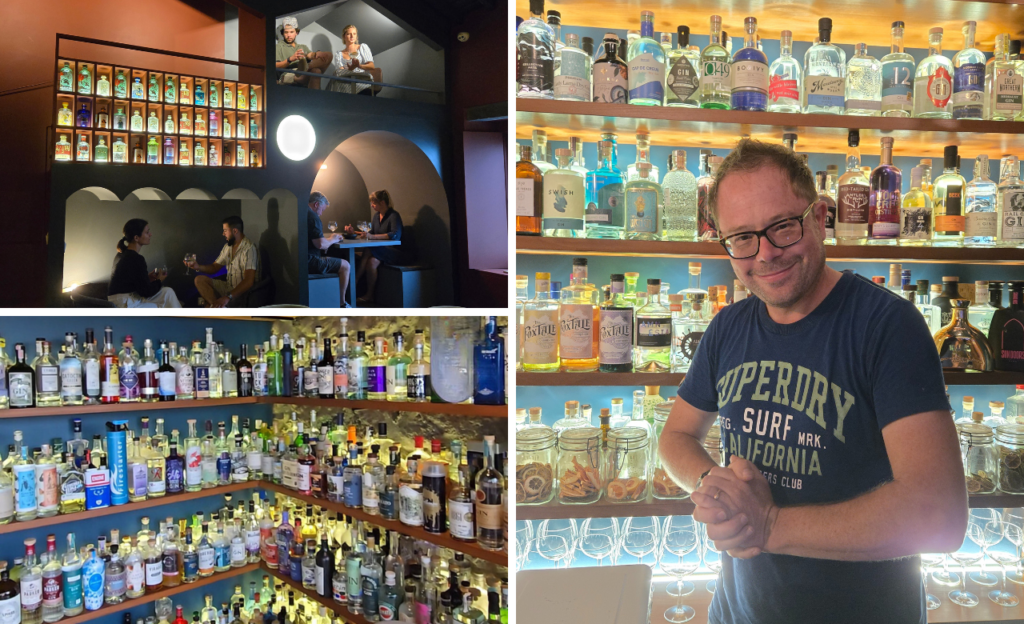
Perhaps the most unique discovery was the Gin Library at the Solar Branco Eco Estate, where Europe’s largest gin collection (currently 1,700 bottles!) resides in a historic manor house. This unexpected find perfectly exemplifies Sao Miguel’s ability to surprise and delight. Travel Maestro tip: If you take Ali, the charismatic owner, a bottle of craft gin he doesn’t have in the collection, he’ll trade you a bottle of his gin made onsite.
The Grand Finale: Sete Cidades
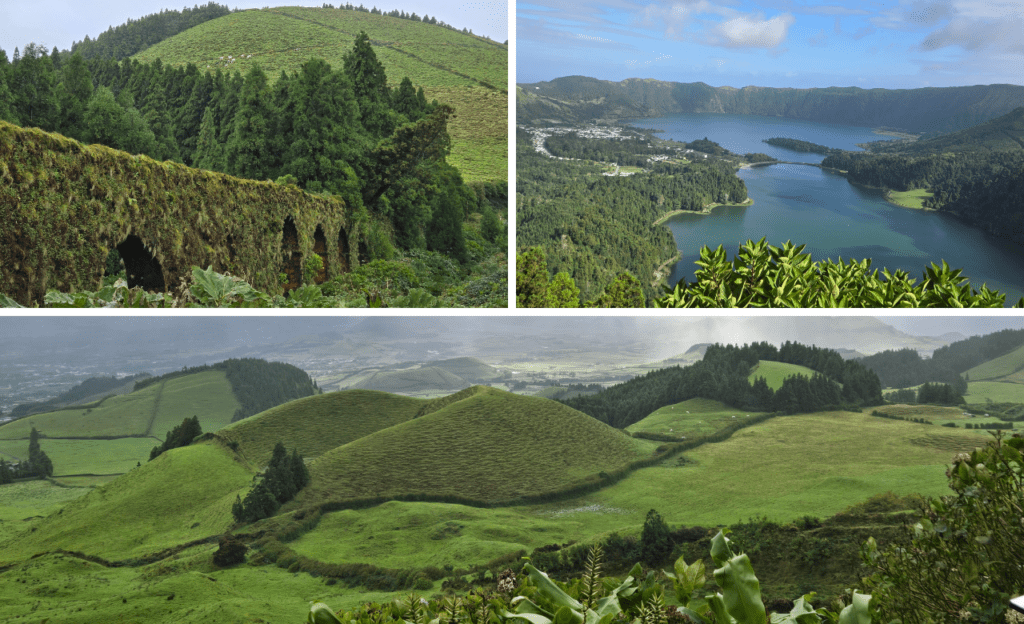
We saved our visit to Sete Cidades for our last Azores adventure. The drive to the western end of the island is magnificent, with massive hydrangeas creating natural hedgerows that line rural roads like nature’s guard of honor. Each miradouro (viewpoint) along the way offered increasingly spectacular vistas. We turned again toward the interior where a 200-year-old aqueduct connected the rolling verdant fields. Heading upward, we climbed switchbacks up to the top of the largest crater for a panoramic view over the twin lakes – one blue, one green. A volcanic masterpiece and simply stunning landscape! Travel Maestro tip: Every one of the crater lakes has a network of hiking trails around it. Sao Miguel is a hiker’s paradise.
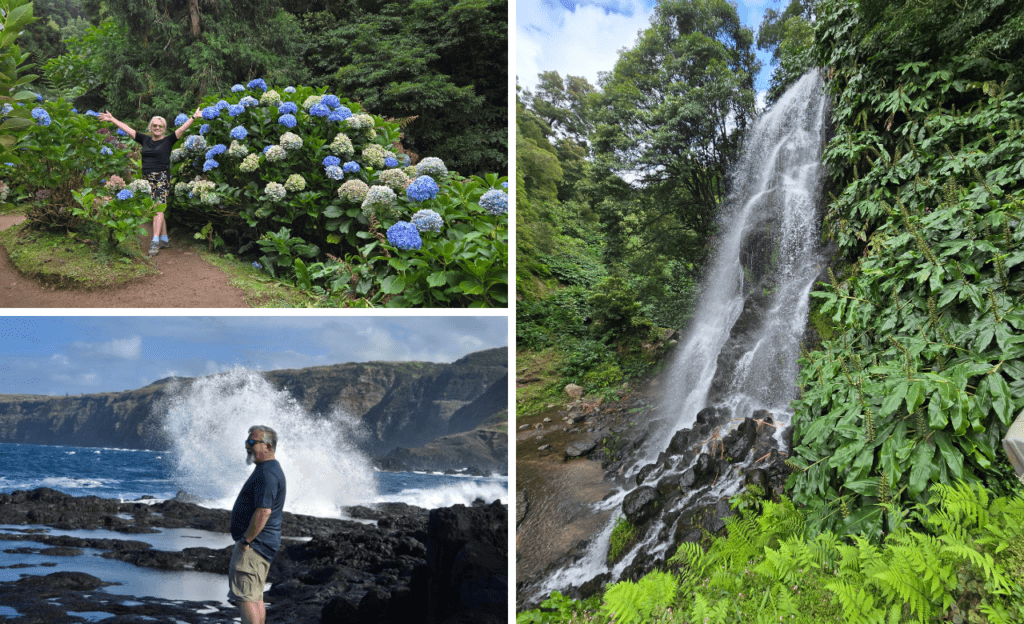
As the day grew short, we headed to the westernmost point renowned for breathtaking sunsets. From high upon a black cliff, the Atlantic Ocean stretched endlessly before us. Paths led down to the volcanic deltas, formed when the boiling magma met the sea eons ago. Waves crashed against the relatively flat rocks and sea spray shot skyward while pockets of Tiffany-box-blue tidal pools were protected enough to swim in. I stood at the edge of this scene watching in awe, as light and shadow played across the dramatic landscape.
The Wonder of Azores Nature
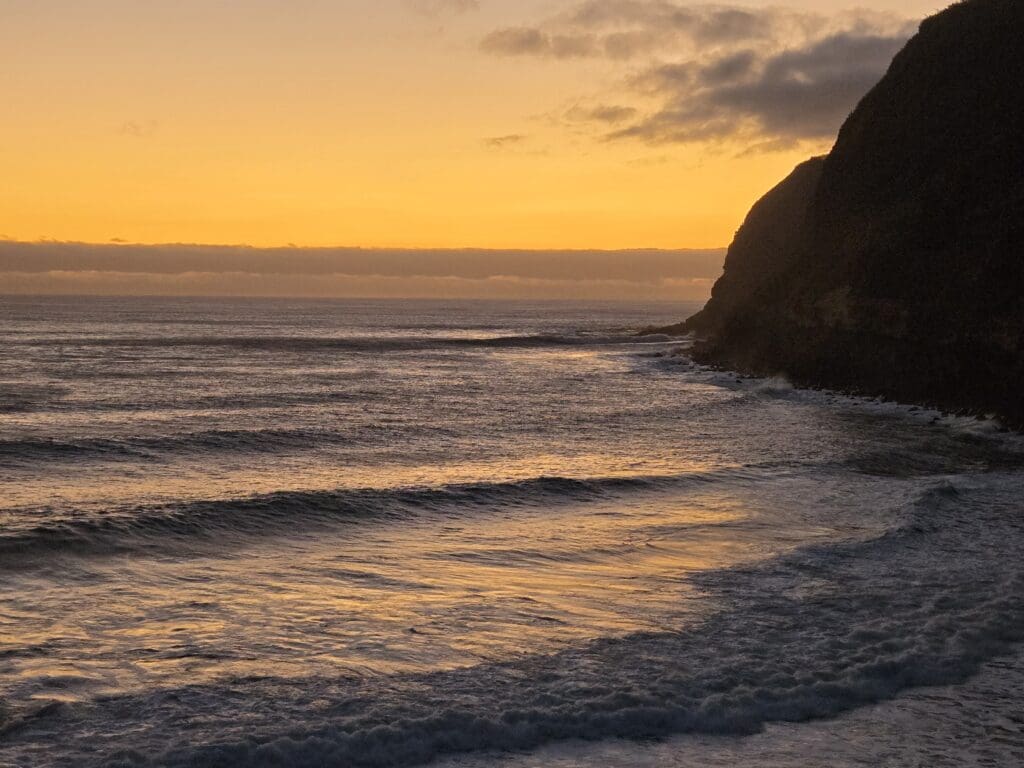
My week on Sao Miguel showed me that some places in the world still hold magic. Here, on this island where volcanoes created perfect lakes, tea plantations thrive next to thermal pools, and the ocean dramatically meets the land, I found a paradise that exceeded every expectation.
This is a place that demands to be experienced rather than merely visited. It’s an island that reminds us that the world still holds wonders, and sometimes the most extraordinary places are the ones we least expect to find. When you are ready to immerse yourself in the wonder of Azorean nature, contact your Covington vacation advisor to plan your journey.






Leave a Reply